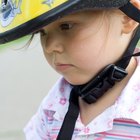
A sense of self-sufficiency and personal autonomy is as important to the elderly as to people in earlier stages of life. But while most people prefer to remain independent as long as possible, issues such as physical safety, possible isolation, mobility and health considerations must be taken into account to determine an individual’s capacity for independent living. These issues must be examined carefully during the decision-making process because emotional factors often outweigh objectivity until an accident or other emergency creates a crisis, according to AgingCare.com editor Marlo Solitto.
Health and Safety
Perhaps the most critical factors to consider when determining if an elderly person should live alone are the person’s current level of health and the likelihood of continued health and safety within the home. When an aging person’s well-being depends on keeping track of a complicated schedule of medications, for example, her ability to keep up with that schedule must be examined. Being able to shop for and prepare nutritious meals is an important part of self-care, and so is the capacity to take care of daily hygiene. The presence of stairs and other potential hazards must be included in the assessment, along with the elderly person’s ability to navigate such obstacles safely on their own. Often, simple home modifications, such as the installation of grab bars and emergency exits and removing clutter from the home, can make continued independent living possible, according to InsideElderCare.com.
Mental Acuity
On the surface, it can be challenging to distinguish between normal forgetfulness and dementia. The former is unlikely to cause major problems for an elderly person living alone, but the latter can lead to serious, even life-threatening, consequences. Fortunately, simple observations such as looking in the person’s mailbox, examining refrigerator contents or inspecting the stovetop can provide important clues to help with this critical evaluation, says the senior care website Caring.com. Stacks of unopened mail can indicate a neglect of personal, financial and business matters, while a refrigerator full of spoiled, expired or drastically overstocked food items could indicate serious memory lapses. Scorch marks on a cooking surface, discharged fire extinguishers or burned pots and pans might signal that forgotten and abandoned cooking has already led to potentially dangerous kitchen fires.
Mobility and Accessibility
The ability to get around safely and easily both inside and outside the home is a crucial component of living alone. The need for a wheelchair or walker should not negate the possibility of independent living for an elderly relative, but the home environment must be carefully evaluated so that any potential problems with safety and accessibility can be corrected. Elderly drivers enjoy a greater degree of mobility than their housebound counterparts. As a group, older drivers have fewer car accidents, but a variety of factors can result in a diminished capacity for safe driving. These include hearing and vision problems, certain medications, the advent of memory problems, slowed reflexes and a limited range of motion, especially in the neck, according to MyAgeingParent.com. Regular assessment of safety behind the wheel is critical in determining the ongoing ability of an elderly person to live alone.
Location and Isolation
Although privacy and periods of solitude are desirable for persons of any age, it is vital for an aging person to avoid isolation. When determining the capacity of an elderly relative to live alone, location is an important consideration. Close and helpful friends and neighbors can add to the elderly person’s sense of safety and also provide peace of mind for children or other primary relatives who live at a distance. Accessibility of emergency services and a quick response time become even more important for an independent elder, and adequate telephone reception can help keep an injury or sudden illness from becoming a life-threatening crisis. Even when neighbors and medical assistance are available for emergency situations, social isolation can sometimes lead to anxiety, depression and a quick decline in an elderly person living alone. Therefore, any assessment of such an arrangement should include the likelihood of regular and ongoing social activities and interactions.
Related Articles

What Are Independent Living Skills?

Casio G-Shock Atomic Time Set ...

Health & Safety Policy for Child Care ...

Tips on Sending Care Packages Overseas

How to Care for the Disabled

Uses of Thermal Insulators

How do I Change the Battery in a Micro ...

Ways to Keep Church Membership Records ...

Indiana Child Daycare Laws

The Disadvantages of Vermicompost

What Are the Advantages of Nursing ...

What Are Letters of Office?

New Salon Design Regulations in ...

How to Set the Time on a Rolex Daytona

How to Obtain a Death Certificate in ...

Emotional Bullying in a Marriage

Alcoholism & Its Effects on the Sober ...

What Is the Difference Between Licensed ...

How to Get Rental Assistance for Seniors

California CPS Laws
References
Resources
Writer Bio
Teressa Rose Ezell has been writing professionally since 2010. She holds a Bachelor of Arts in sociology and English from the University of Arkansas at Little Rock and is a Master of Fine Arts in writing candidate at Lindenwood University. Current projects include a short-story series and a collection of creative nonfiction essays.
Photo Credits
simarik/iStock/Getty Images